Customizing auto charts in PowerPoint
- PowerPoint design
- Comments: 3
Functional presentation slides can be fabulous too! Add a little spice to your live PowerPoint charts with this delicious doughnut chart DIY.

Have you ever attempted to speak a different language when you’re abroad, assumed you’re doing a great job, but then realised the person you’re talking to has no idea what you’re trying to say? Things can get lost in translation no matter how hard we try. We’ve all been there! We’ve been investigating what gets lost in translation when you convert PowerPoint to Google Slides.
If you’re a Google Drive user, you’ve probably noticed that when you open a PowerPoint file from your Drive, Google Slides is the first recommended program. While both platforms broadly serve the same purpose, there are lots of differences between the two and we’ve noticed certain things get lost when a presentation created in PowerPoint is opened in Google Slides. But how do you know what to look out for?
Put down your translation books! One of our most experienced Google Slides experts and one of our most wonderful PowerPoint wizards are here to pin down the compatibility issues you might experience when you convert PowerPoint to Google Slides, or vice versa. This post brings their findings together, so you’ll know exactly what to look out for.
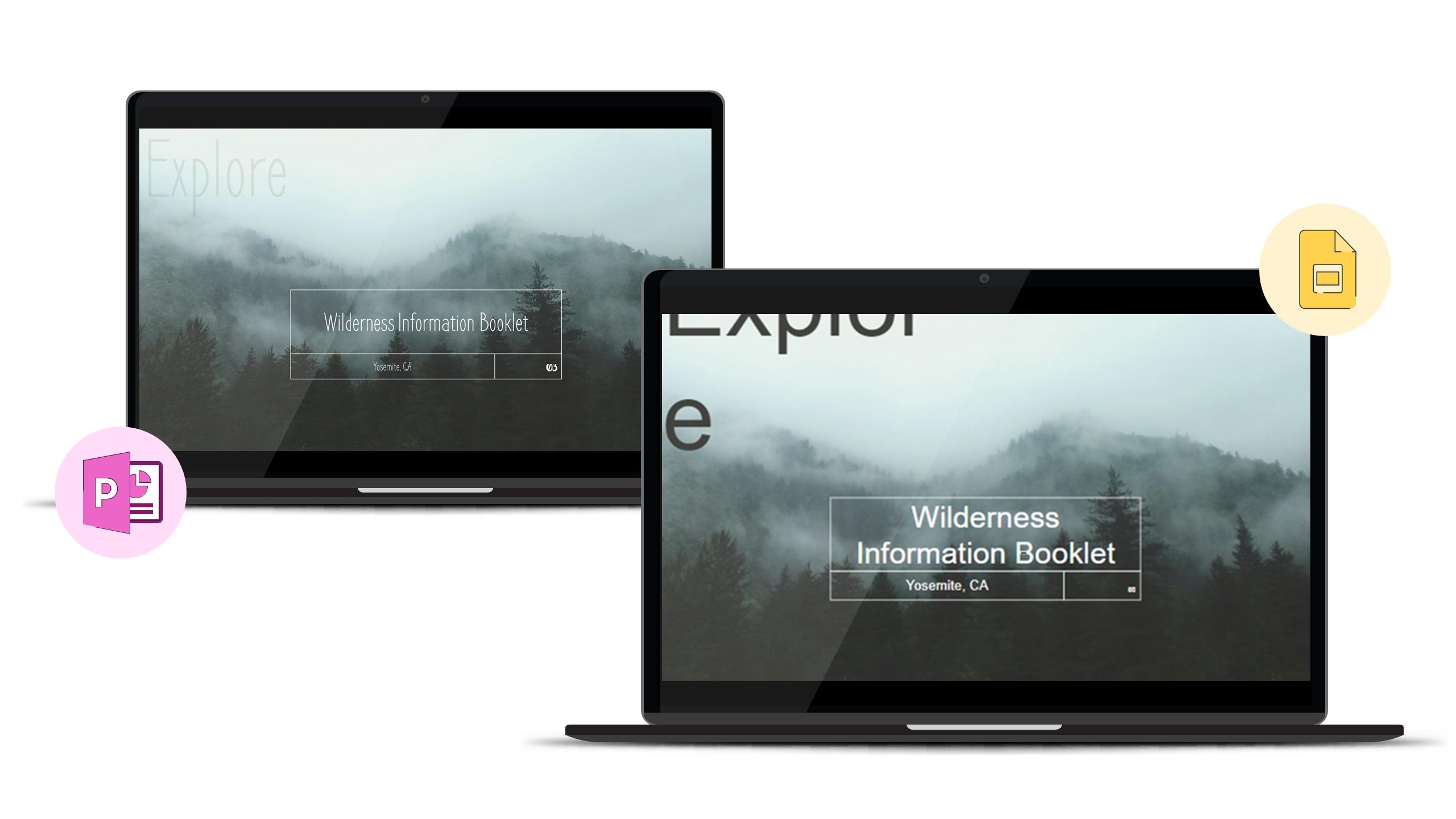
One of the most notable compatibility issues between PowerPoint and Google Slides is fonts. Both programs offer an extensive font library, giving you a wide variety of styles at your fingertips. However, in PowerPoint, in addition to the default system fonts, users have the ability to install and use custom fonts, providing improved flexibility for your design and your brand.
Google Slides only support fonts that are available in the Google library. Any fonts you’ve used in a presentation that are not available in the Google library will automatically be changed to Arial when you convert a PowerPoint file to Google Slides. This can cause design and formatting issues with sizing and spacing as different fonts have different dimensions. It can visibly change the look of your design.
If you open your PowerPoint file in Google Slides but do not amend or select anything (and so don’t prompt the autosave), when you reopen the file in PowerPoint, the original fonts will be preserved. However, if you tweak any content on the slide, amend any text, or prompt Google Slides to save in any way, the fonts that are not supported in the Google library will change to Arial permanently. They will not change back if you open the file in PowerPoint later. This issue unfortunately still occurs even when the fonts are embedded into the PowerPoint document.
Two other type-related compatibility issues we’ve noticed are with text transparencies and WordArt. Transparency of text does not seem to be preserved from PowerPoint to Google Slides,
as it is not natively supported in Google Slides as a functionality for text. WordArt is also not supported as a design style in Google Slides, and any you have used will appear as generic text.
So, just be aware: text might be converted into something different and alter your overall design!
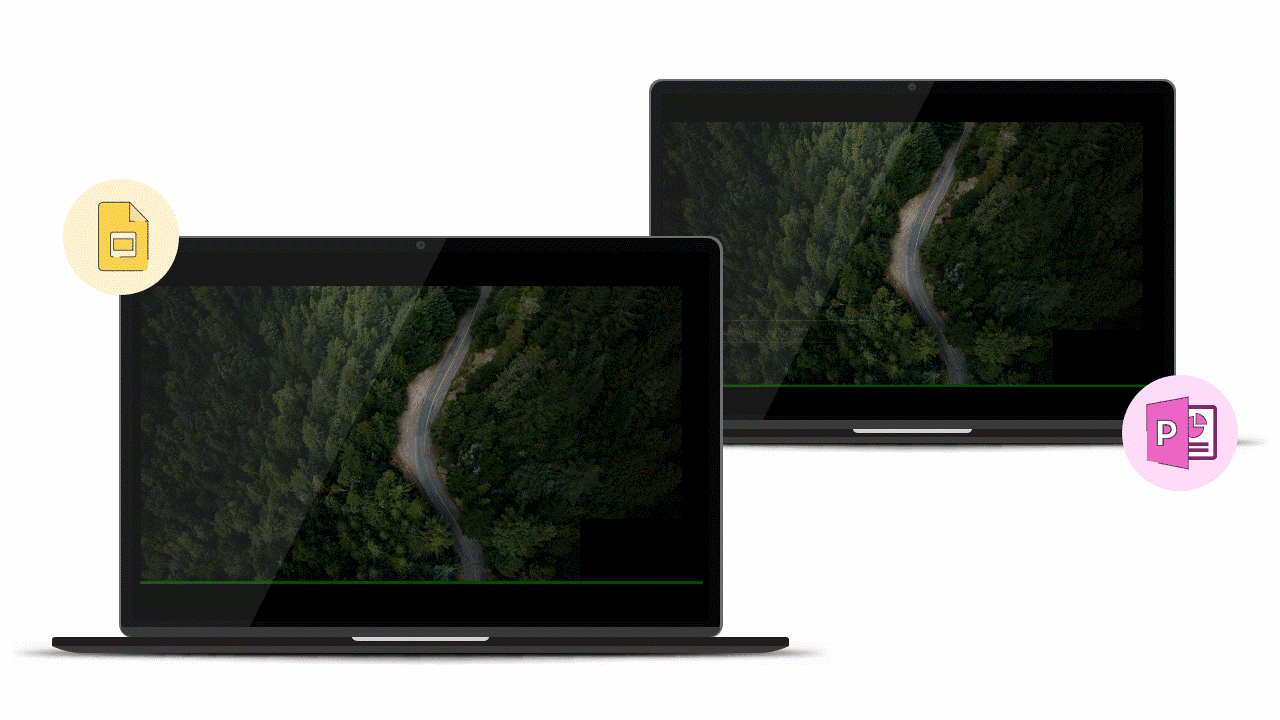
Both applications give you the option to add animations to your content. This is integral to communicating information to your audience in an engaging way, and allows the presenter to deliver controlled, dynamic storytelling that enhances their presentation. Read this post on how to make your slides easier to present for tips. However, there are differences between the two platforms.
Google Slides can time animations With previous, After previous and On click, however, the timing options end there. The option to delay animations, available in PowerPoint, is not supported by Google Slides. So, if you convert PowerPoint to Google Slides, any more advanced delays or timing will be removed from the file, altering the way your animations work.
Another difference between timings is that in Google Slides durations can be measured down to one decimal place, and in PowerPoint down to two decimal places. This means Google Slides will round up any timing from a PowerPoint deck, causing slight animation inconsistencies. This may sound minor, but in a complex animation it can cause a noticeable difference.
Preset animations in both platforms are handy – they can make animating simple content quick and easy, however, again, there are differences between the two programs. PowerPoint’s preset library is quite vast, and Google Slides’ library is somewhat restricted. So, if an animation is used in PowerPoint that is not available in Google Slides’ preset library, opening the file in Google Slides will mean the animation is removed from the deck. This can cause animation sequences to break. Motion paths are included in this, so any motion path created in PowerPoint will not be supported in Google Slides, and will therefore be removed when opening a PowerPoint file on that platform.
If Google Slides removes any PowerPoint animations from your deck, it can have a knock-on effect to presenter animation clicks. If, for instance, a motion path is created to play on a click in-between other animations and that motion path is deleted, that click will no longer exist, and the remaining animations will play through without the intended break.
Transitions are another aspect that are not fully supported in a PowerPoint to Google Slides conversion. Google Slides supports very basic slide transitions with a timing between 0 and 5 seconds down to 1 decimal place, whereas PowerPoint’s preset library of transitions is much greater, and offers the ability to customise timing down to 2 decimal places. If you’ve used any “fancy” transitions – PowerPoint’s Morph, for example – when you open the presentation using Google Slides, this transition will no longer work.
Both platforms have the ability to make your content come alive using animations, however, as PowerPoint’s preset library is larger, aspects can break in the crossover to Google Slides – seriously compromising your dynamic storytelling. No presenter wants to introduce a slide with broken animation and wayward clicks, so be aware of these differences before you put your slides in front of an audience.
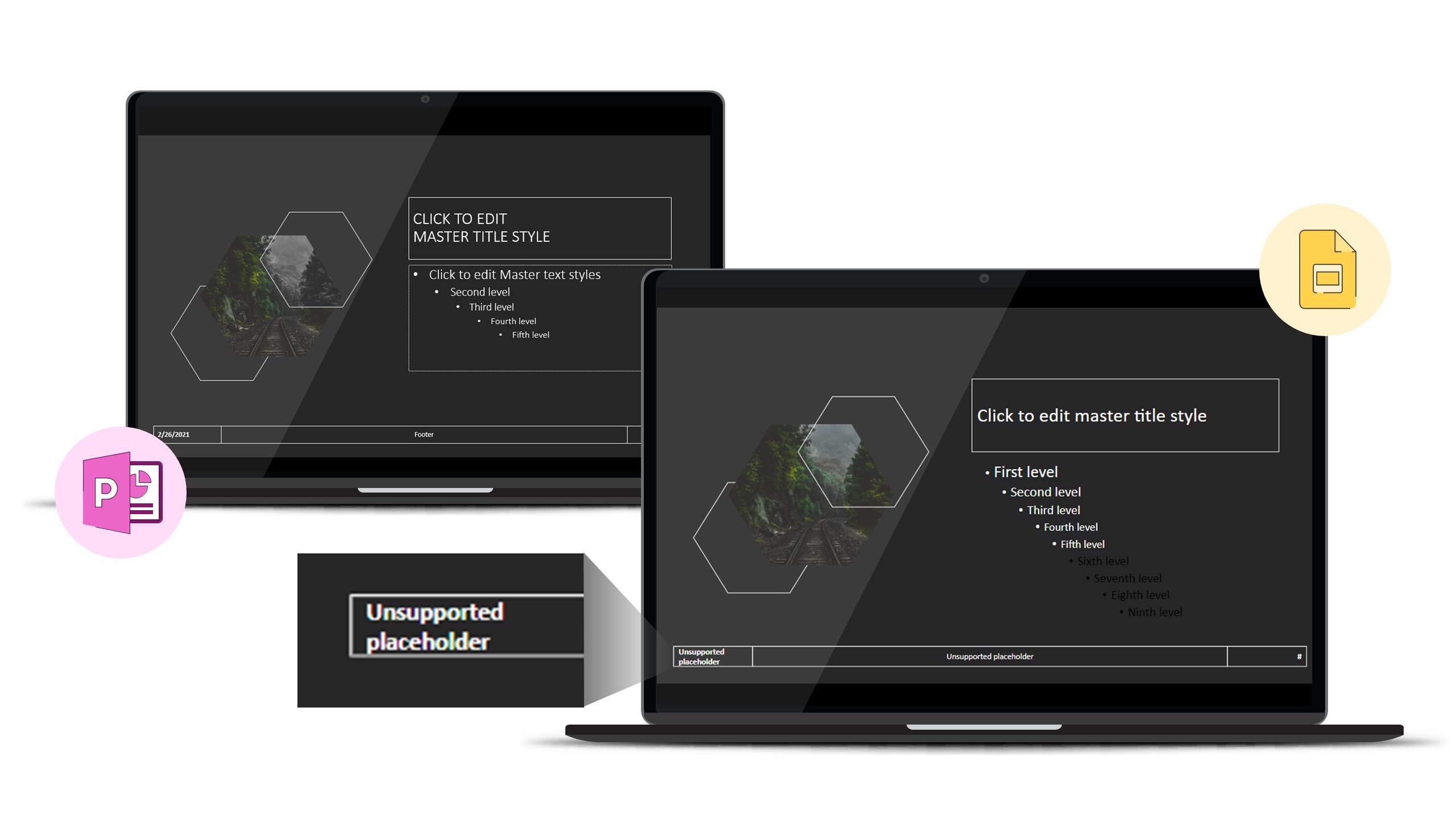
Both platforms allow users to set a template when creating a presentation. This can help keep brand guidelines in check and supply you with consistency across designs.
There are, of course, some slight differences between the two platforms. If a project is kept within one platform, this is not an issue, but if you merge the two (for instance, create in Google Slides and open/edit in PowerPoint), you’ll likely find consistency issues between the templates due to the programming. If you’ve created a template in PowerPoint but are editing a slide in Google Slides and need to include a footer, this would raise an issue as Google Slides doesn’t support footers. In PowerPoint, you could choose ‘Insert’ > ‘Header & footer’, and then edit the text within the programmed placeholder box. This is not an option in Google Slides, even if the placeholder is created in a PowerPoint file.
Google Slides fully supports template programmed colours, which is great for keeping brand consistency in the crossover. However, if you include secondary colours in your PowerPoint template using XML, be aware that this is not supported in Google Slides. Confusingly, these are preserved in the file, so if you include secondary colours in a PowerPoint file, then edit a slide in Google Slides, and then open the file back out into PowerPoint, the secondary colours will still be visible in the template – you just won’t be able to access them from the Google Slides platform.
Google Slides unfortunately doesn’t have the same ability to view objects within a selection pane the way PowerPoint does. So, there’s very limited control over the front-to-back layer order of your objects on a slide. Learn more about using PowerPoint’s Selection Pane here. Generally, the order does seem to be preserved between the platforms, but we’ve seen anomalies where that’s not the case and an object’s layering position has been altered.
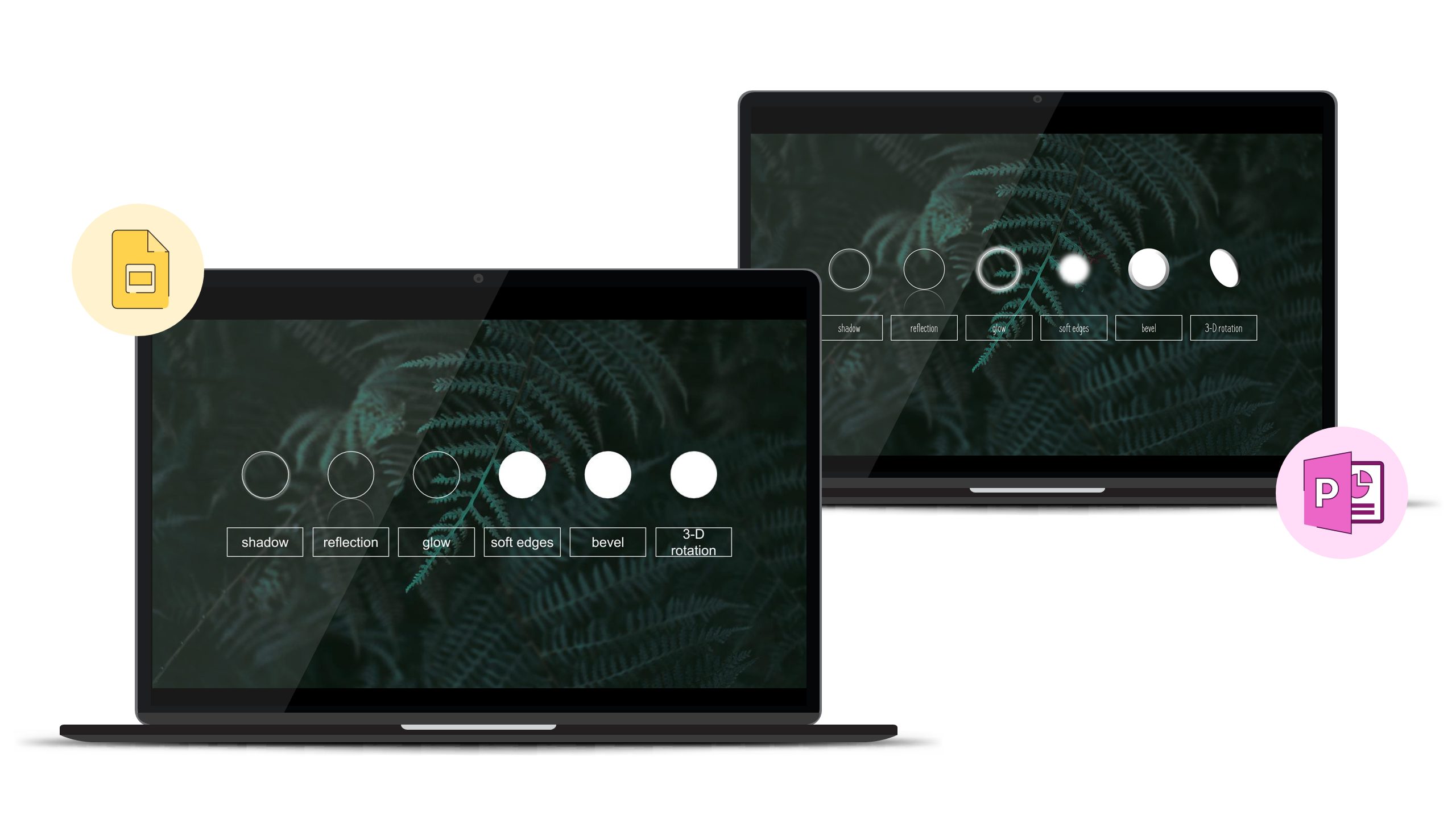
Both platforms have the same preset library of auto shapes, which is great for the user and for compatibility between the two platforms. But there are some things worth noting before you convert PowerPoint to Google Slides. Most shape effects from PowerPoint are not fully supported in Google Slides. Drop shadow and reflections are preserved, but others are deleted in the conversion as the preset isn’t available in Google Slides. Shape fills, gradient colours, and image fills are preserved in Google Slides, but pattern fills are not (the background colour is chosen, and a solid colour fill of this colour will be applied to the shape).
The options for line widths in Google Slides is given in set numbers (1, 2, 3, 4, 8, 12, 16, and 24pt), whereas PowerPoint’s is fully editable. We found the conversion of line widths inconsistent with no logic or warning! For example, a line width of 3pt in PowerPoint became 4pt in Google Slides, even though 3pt is a line width option in Google Slides. Both the factors above can cause visible differences in a slide design, and inconsistencies throughout your presentation.
We believe there’s also a malfunction that occurs when multiple lines are created in PowerPoint and then grouped. If a slide with this type of group is opened in Google Slides, a glitch can occur where the group is visibly broken. Some of the lines appear to have been deleted altogether and others have moved, rotated, or resized within the group. This only seems to appear when the group just contains lines and no other objects or shapes. So, watch out for this one!
SmartArt is also something to keep your eye on! If you create SmartArt in PowerPoint and then open the file in Google Slides, it’s seen as a group of objects/shapes similar to in PowerPoint. The difference is that when you ungroup the SmartArt in Google Slides, text that sits within a shape is seen as a separate object and text box. It’s not a huge issue, but when editing in Google Slides this can cause alignment issues with the text within a shape. Also, any animation placed on SmartArt in PowerPoint will be lost in the conversion.
Another general difference between the two platforms is the units of measurement. PowerPoint’s default unit of measurement is set to your system’s units – often metric cm around the world, but inches in Canada and the US. However Google Slides is set to inches everywhere. So, when you convert PowerPoint to Google Slides all measurements are converted. While this may seem like a trivial point, this factor, combined with the difference in decimal places available between platforms, can sometimes cause a visible difference in shape dimensions, alignment, and text margins.
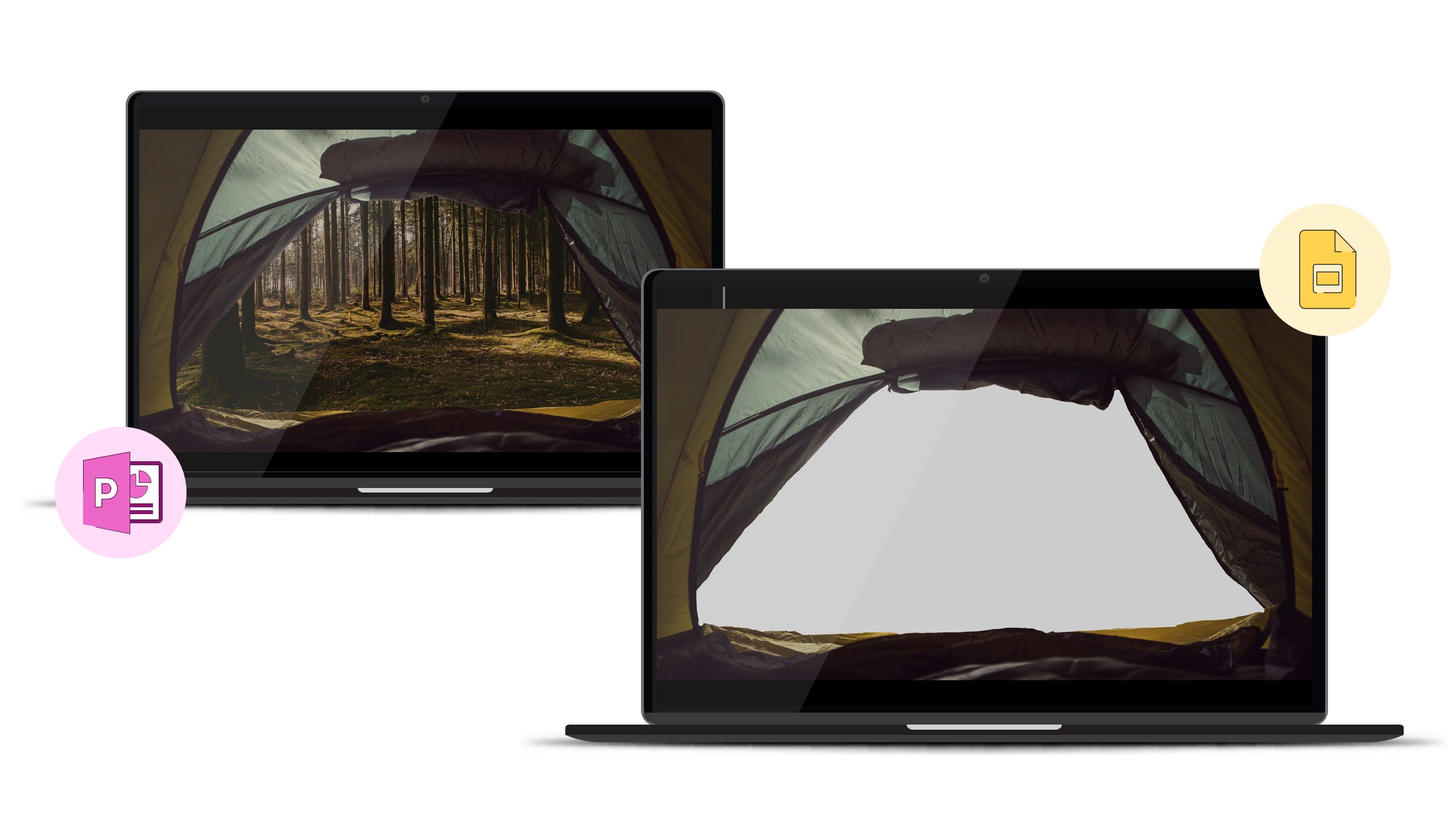
Both platforms support custom graphics, such as vectors, however, the process of inserting them differs greatly. Importing vectors into PowerPoint is a straightforward process, using the copy and paste tool, or importing a correct file directly onto a slide. Doing the same in Google Slides is much more convoluted. Adding a vector to Google Slides involves saving the vector as an SVG file, uploading it to Google Drive, converting it to an EMF file, and then importing it into your presentation. Both platforms have the capability to import vectors, one makes the process more complex than the other!
If you’ve edited images directly in PowerPoint and then open the file in Google Slides, Google Slides will preserve image transparency and any cropping, and will also support backgrounds that have been removed using the Remove background feature in PowerPoint. The anomalies only appear when transparency has been applied to images using PowerPoint’s Set transparent colour feature – this feature is not supported by Google Slides, and the image will revert to the original, ignoring any transparency that has been applied.
Another difference when it comes to images is the lack of editing capabilities in Google Slides when an image fill has been applied to an auto shape in PowerPoint. Google Slides will see this as a shape and not a photo, removing the extended editing options you might expect to have access to.
If you’re running an up-to-date version of PowerPoint, you may have access to the preset icon library. If you include any of these within your slide design and then open in Google Slides, the icon will be seen as an image and not an editable SVG file, so no colour editing options will be available. The same thing happens with 3D objects in PowerPoint – if these have been included on your slide and then opened with Google Slides, they will be seen as static images, not editable 3D models.
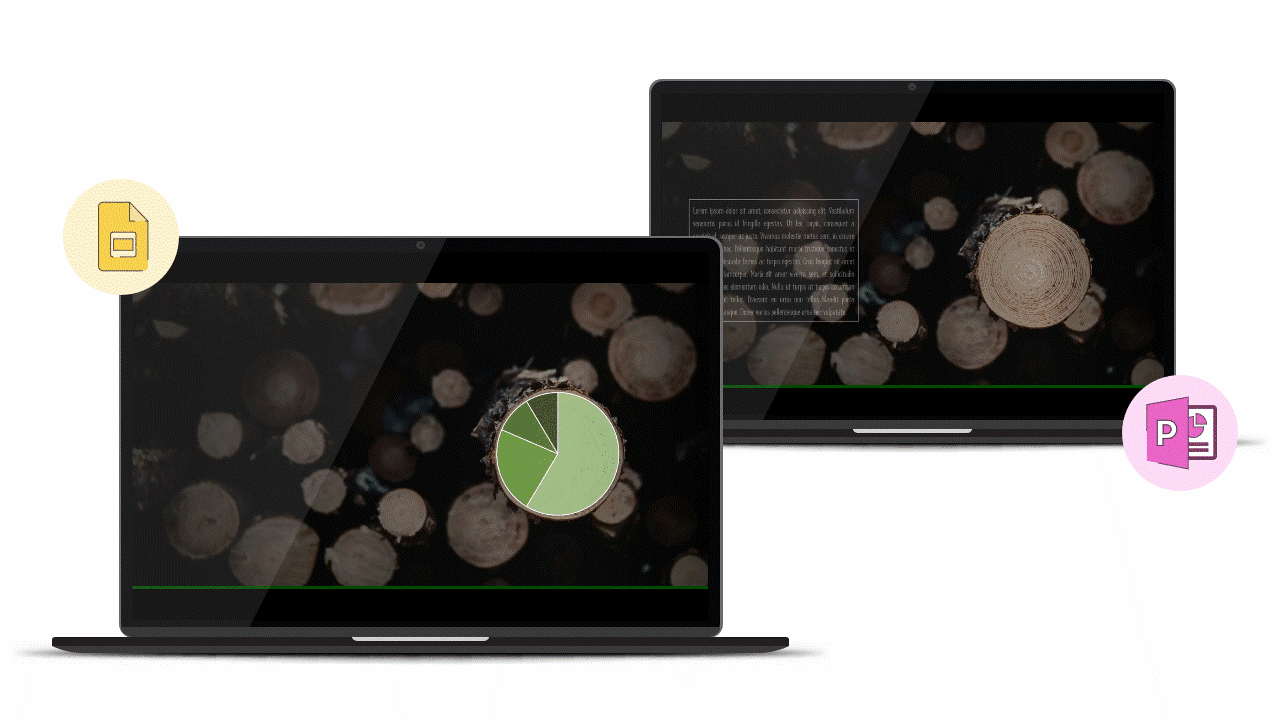
Here is where the compatibility differences become even more visible. In a nutshell, Excel is not compatible with Google Slides, and Google Sheets is not compatible with PowerPoint. It’s sad that these two don’t see eye to eye, but at the moment that’s just how it is.
Live charts in Google Slides are pulled from separate Google Sheets documents. The editability then lies within Sheets and not Slides, so the graph appears in Slides as a non-editable image, making future edits tedious and time-consuming. Google Slides does not support live graphs created in PowerPoint (or inserted into PowerPoint from Excel), as it cannot access the data from Excel. The Excel sheet is not accessible or editable when the presentation is opened in Google Slides, but it is not lost – it is accessible when you open the file back up in PowerPoint. This means editing a graph which has been made in PowerPoint/Excel in Google Slides is impossible. And the same is true the opposite way: a graph made in Google Slides cannot be edited in PowerPoint.
Any live graphs made in a PowerPoint file and then opened in Google Slides are not seen as a live graph, nor as an image, shape, or an editable graph. They become this mysterious object in Google Slides which cannot be edited. The conversion between the platforms simply does not support live graphs for editing. Also, due to Google Slides seeing the graph as a mysterious object, any animation you’ve added to the graph is removed. Adding animation to a graph is very useful when displaying complex data sets, as it allows the presenter to break down each section in turn so as to not overwhelm the audience. Read more on that here. This loss of animation can hinder the storytelling and break the presenter’s flow.
Tables behave in an interesting way in the crossover between the platforms. Some of the design options available in PowerPoint are not supported by Google Slides, and so make editing the table very difficult or impossible in some cases. For instance, due to the measurement issues we mentioned before, line widths can alter in a table, become visibly different, and can become difficult to edit. For example, the capability to split cells within a table is not an option in Google Slides, though merging them is.
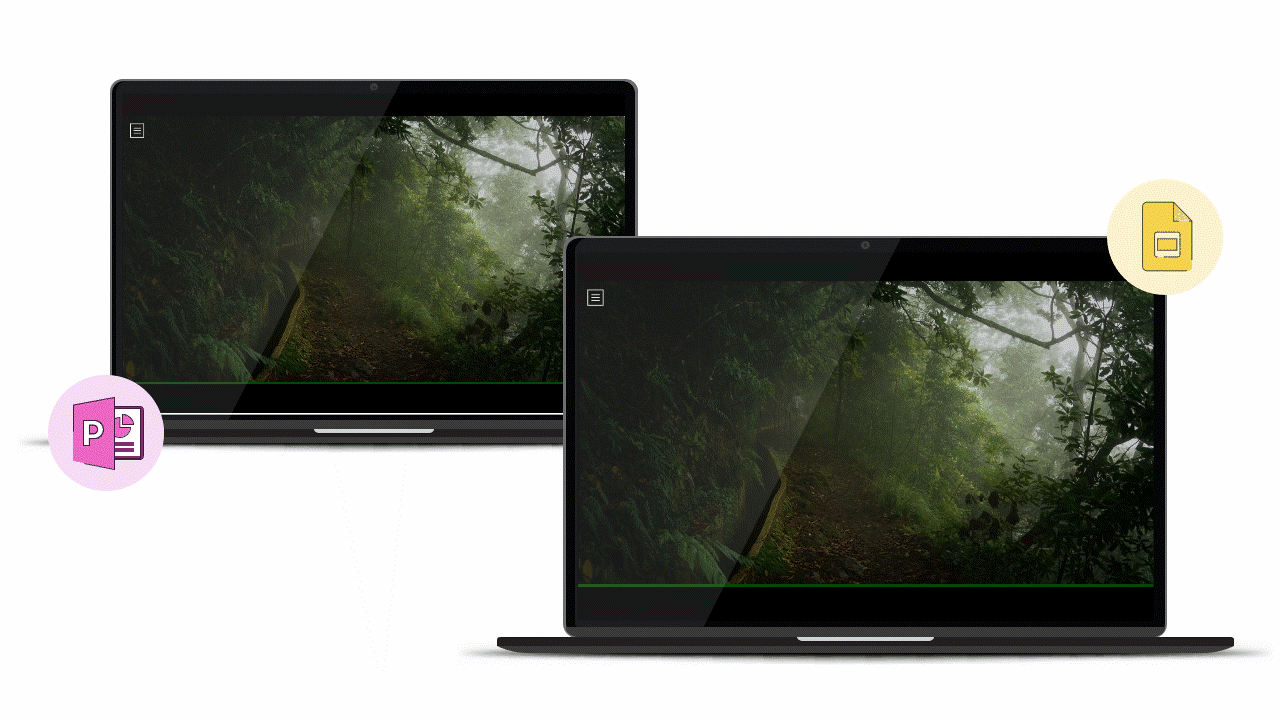
Having the ability to create advanced presentations that run in a non-linear pathway is a huge advantage. The freedom to roam around a mass of information with the use of buttons and menus can enhance the user experience greatly. Interactive click and explore decks offer a dynamic, technological experience that a standard presentation can’t give you. PowerPoint offers not only external links, but also the ability to create buttons and triggers that enable the user to navigate within the document freely. We love that Google Slides now preserves external and internal links. However, triggers are not yet natively supported, so this functionality is void. More advanced techniques obviously fall into this gap too, such as using VBA and macros. Check out this blog post for some serious cool VBA magic.
PowerPoint can also work alongside HTML5 converters such as iSpring to convert presentations into web-ready interactive content, or for use on Showpad. Neither of these functions is possible with Google Slides.
Having collected all the evidence, and considering the vast inconsistencies we’ve experienced, our overall conclusion on the compatibility of Google Slides and PowerPoint is that they are nowhere near fully compatible with one another. If you push files back and forth between the two platforms, you’ll notice visible and damaging differences to your content which can cause huge amounts of stress to both the presentation creator and the final presenter. No presenter wants to deliver a broken deck!
We’d suggest keeping the two platforms at arm’s length from one another – see them as squabbling siblings! It’s best to decide which platform your project is going to be presented on, and then start the design process using just that platform – no crossovers. That way, you can create beautiful decks using either platform and avoid any unwanted anomalies. We don’t want anything getting lost in translation here!
Information true at time of testing.
Updates may change functionalities in the future (we hope!).
Functional presentation slides can be fabulous too! Add a little spice to your live PowerPoint charts with this delicious doughnut chart DIY.
Drop-down menus in PowerPoint allow you to create flexible, interactive slides. They can help you make interactive self-led presentations, documents, eLearning, training materials…. the list goes on!
Sometimes we struggle to find things and get frustrated when they don’t appear, whether it’s locating your house keys, finding Wally in a sea of Wally impostors or hunting down the partner to that lone sock at the bottom of the washing basket. Or maybe it’s replacing fonts that PowerPoint says are present in your file, but you just can’t find and your childhood Wally searching skills are letting you down. Well, this post can help you with PowerPoint, but you’ll have to find the sock yourself, sorry!
Join the BrightCarbon mailing list for monthly invites and resources
Tell me more!Great work combined with amazing service, gracias Team BrightCarbon!
Mila Johnson InComm

Hello author, thanks for your great article. Can you please mention the compatibility complications when we convert Google slides to pptx? Will Microsoft PowerPoint support most of the google slides functionality? Thank you.
Thanks for this – very useful. With regard to the object list in the Selection Pane…
I build decks in PowerPoint for a team that accesses them through a shared GoogleDrive location – mostly by downloading the decks and running from PowerPoint on their own machines. The slides are built entirely of images – sometimes in elaborate layers – and need to be edited or redesigned periodically so I’m careful to accurately label the objects in the Selection Pane so I can navigate easily during editing.
Should anyone on the team make the mistake of opening the deck in GoogleSlides and changing so much as a comma in a PL note or even use the comments to ask another member of the team a question that then gets answered, GoogleSlides replaces ALL of the object names in the entire deck with “GoogleShape;xx;xx”. I have tried to reach GoogleSlides developers without success. Is this a bug in the application or is there some setting by which I can protect my decks from this issue? Thought you might have some insight!
Hi Jowi,
If you open a PowerPoint document within Google Slides it will convert your content to Google Slides ‘friendly’ content. Therefore, Google Slides naming conventions take place to objects within your deck. (Hense the ‘GoogleShapexx’ renaming.) At this moment in time, I am unaware of any work round to ensure layer names are protected when opening a PPT file within Google Slides. My suggestion would be to try and ensure team members only open the PowerPoint file within the correct software. If this does happen, re-uploading the PowerPoint file to Google Drive would be my only suggestion at this time. Apologies for this, I know how frustrating this can be!